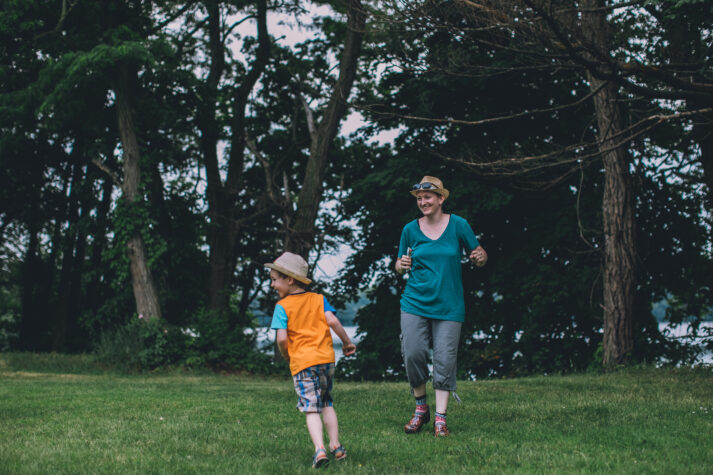

You won’t need many supplies or much room to enjoy these backyard nature activities, ideal for passing the time and getting outdoors while physical distancing.
Adhering to physical distancing and stay-at-home advisories means we’ve hopefully all postponed the weekend day hikes along a popular route or even the afternoon escapes to crowded local parks, farms, and nature preserves. While we know we’re doing the right thing and that this quarantine won’t last forever, we still sometimes feel cooped up and robbed of our right to freely explore nature—doubly so for the energy-laden little ones in our households.
Worry not: Backyards, even ones in cities, are teeming with nature and ripe for exploration. Here are our 10 best backyard nature activities requiring no materials or materials you probably already have in the house.
Got an idea of your own? Send us a note at [email protected] or a tweet @appmtnclub. Maybe we’ll feature your activity in a future post!


1. Backyard Plant Identification
Can your kids find five different kinds plants? How about three different kinds of flowers? Can they tell the difference? Think about the colors of the leaves or petals, the shapes of the branches or stems, and how tall or short they are. Can they find an item that’s a circle, a triangle, or another shape? To make this even harder, cut shapes out of a piece of paper and have your kids try to match the shape to something in nature. Find household items that are brightly colored, like old paint swatches, parts of cereal boxes, bathroom towels, or running shoes, and have the kids find natural items in those colors. But be sure kids know that when we’re looking for different nature, we don’t pick them! This is a great chance to tell kids about Leave No Trace. Here’s a handy plant identification guide you can use.


2. Backyard Art
Make cardboard picture frames, then ask kids to collect items they’d like to put inside, creating pieces of art. Don’t have cardboard? Cut up a cereal box or tape a few pieces of newspaper together to make a frame. Make sure to set guidelines that they should only pick up things that are on the ground, and shouldn’t pick anything that’s growing.
For another challenge, tell your kids to only collect green items, then yellow, then red. Why are some colors easier to find? This is a great time to talk about seasons. If you were to do this in the winter, what colors would you be able to find? What about fall?
Have kids assemble their nature finds within the frames, as a nature scene, a collage, or a mosaic. Encourage them to let their imaginations guide their hands as they create!
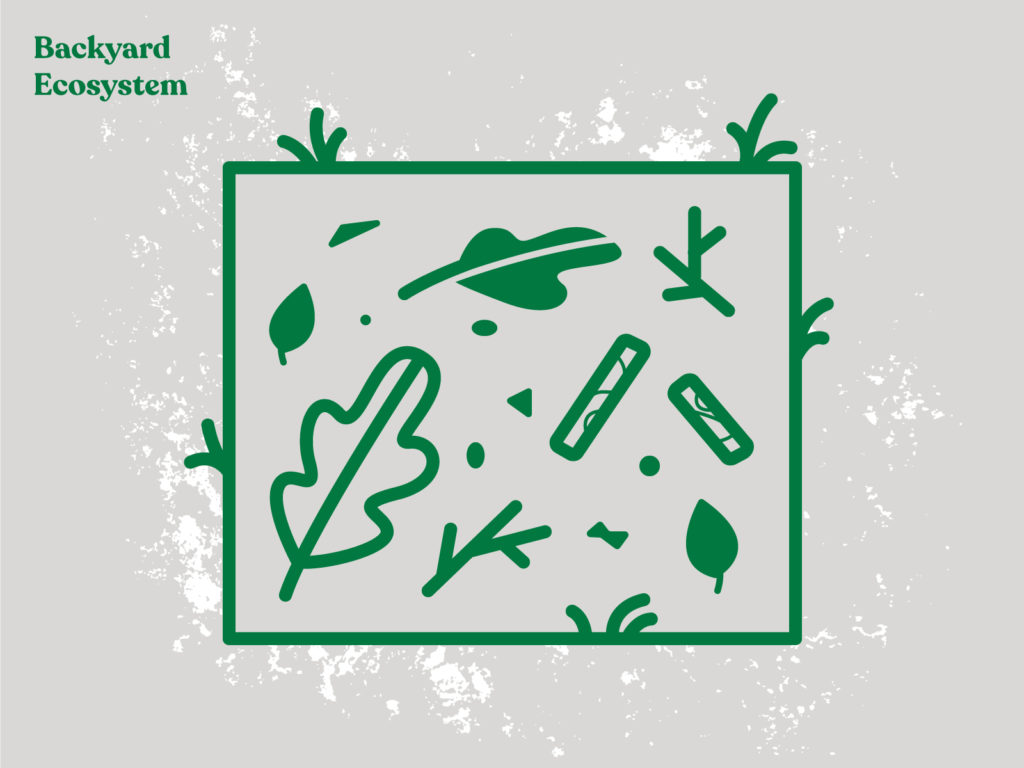

3. Backyard Ecosystem
Take a white or a light-colored sheet outside and lay it on the ground, under a tree. You can use towels or an old t-shirt, too. Shake the branches, lightly, to see what comes out. Are there seeds? Are there leaves? Is there pollen? Are there bugs? Why do you think there are more bugs in one place versus another? If you did this in the fall, what would fall onto the sheet? (This is a great chance to talk about seasons.)
Once you have a little pile of objects on the sheet, try to build a little fairy or gnome house out of them. Pick a tree to lean your house against, and use sticks, rocks, leaves, and moss to create a house. Don’t forget to name your fairy or gnome!


4. Find Life in the Backyard on a Microhike
On a microhike, kids can pretend to be small and explore an ecosystem: a biological community of living things interacting with their environment, in this case, your backyard. Create a circular habitat somewhere in the yard using a hula hoop or a piece of string. Have family members surround the micro-ecosystem and point out everything they see. The goal is not to hike far, but to explore your yard at a “micro” level. Focus on the life that lives under rocks, logs, and our feet. Have the kids pretend they’re ants; encourage them to shrink down really small and get close to the ground to explore! Discuss the importance of using all five senses in looking for small things. If you want your kids to explore a new part of the yard, consider throwing a bean bag or frisbee to a spot and have the kids explore the area around where the object lands.
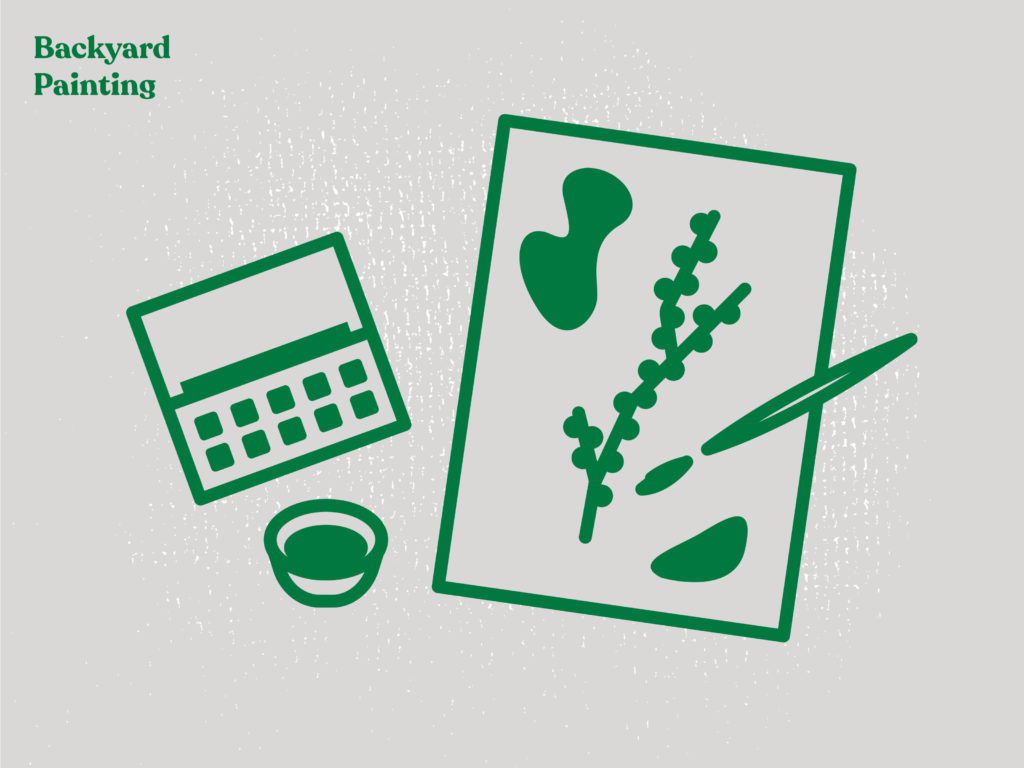

5. Backyard Painting
Using watercolors or any kind of paint and scrap paper, have the kids pick out a scene in the backyard and paint it. For a challenge, let them try to paint it with their eyes closed! What are the most distinct things they remember about the area? Is it the tall trees? The feisty squirrels? The fluffy clouds? When they’ve finished their painting, have them give it to someone else and have them guess what part of the backyard you painted.
If you have acrylic paint, consider having them painting your masterpiece on a rock you provide them. When it’s dry, encourage them to put it outside in the yard or garden so they can visit their painting anytime.
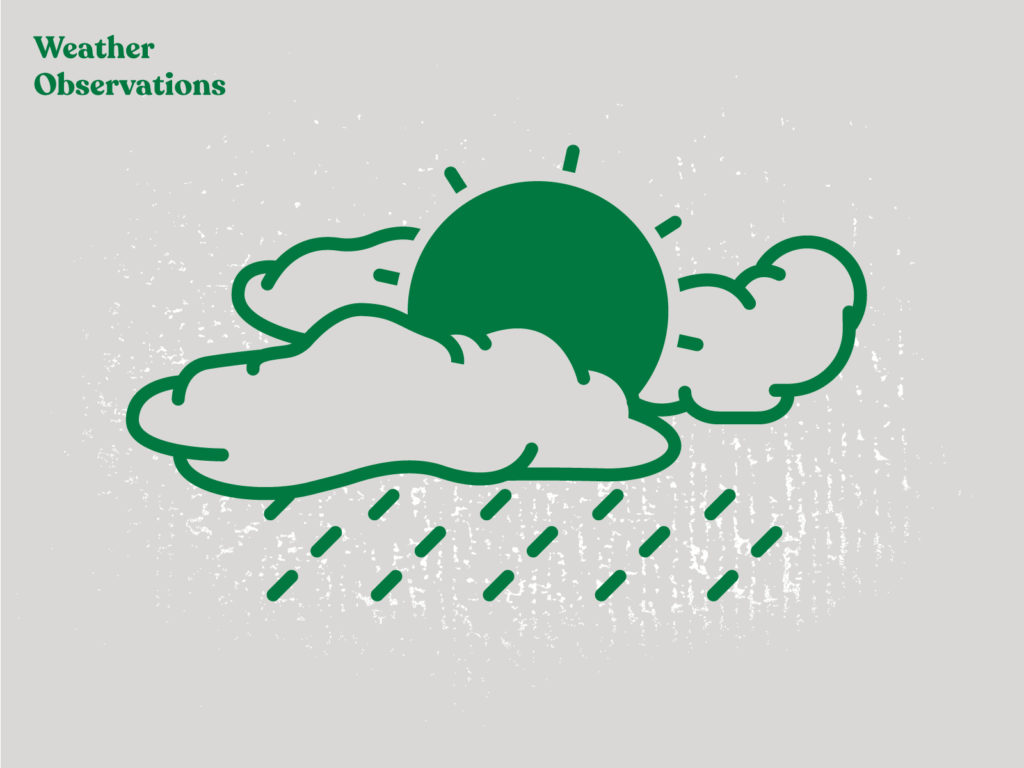

6. Weather Observations and Nature Journals
Have kids take a notebook or journal outside with them for 10 minutes at the same time each day. You can help them make a simple homemade journal: Fold a few pieces of paper in half to form a booklet; punch holes along the “book” where the fold is; and use yarn to tie the journal together. You can also use staples instead.
Instruct kids that they’re going to be observing one specific area each day for a week and recording what they see, hear, and smell. Have them make predictions first. For example:
- What color will the sky be when it’s sunny out?
- When will I hear the most birds?
- What will it smell like right after it rains?
Each day, send your kids outside at the same time to record what’s happening. They can focus on the weather, the colors, the animals, or anything they want. At the end of the week, have your kids observe what has changed or stayed the same. If there weren’t flowers there at first, are there now? Spring is a perfect time of year to do this, because it changes so quickly! This can also be a great time for adults to kickstart their own nature journals.
For older kids, this activity is a great chance to introduce the difference between climate and weather. Put simply, climate is what you expect the conditions to be, and weather is what you get. Have the kids draw or record what they see, and then have them imagine what their journal would look like if they were to record the same scene in the winter.
This is a great place to expand on an activity and introduce a new lesson.. Have your kids use their observations to write a story. Can they write from the perspective of an ant on the ground, or the tallest tree standing over everything? Science and writing can be easily connected, and sometimes adding a different element in can make the activity more fun for reluctant learners.
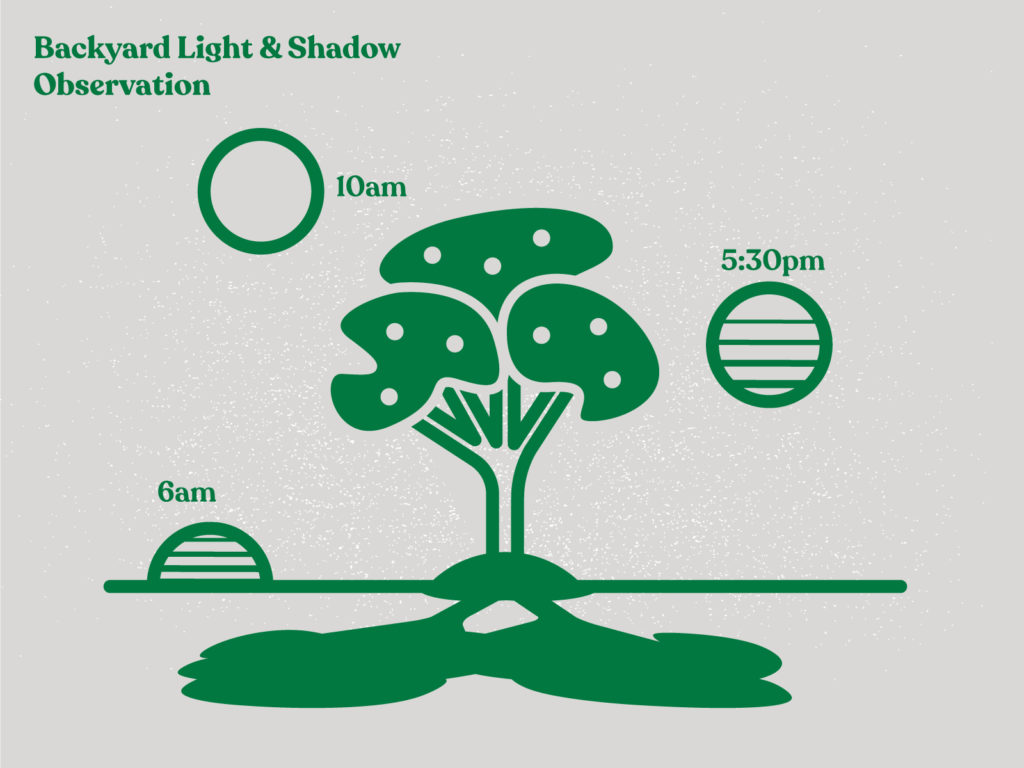

7. Backyard Light and Shadow Observation
Spend a day talking about shadows. Ask your kids: If you look out onto a flat area with nothing around, are there shadows? There aren’t, because shadows need two things to exist: a light source and an object. A shadow is actually light blocked by an object!
Conduct an experiment: Have someone hold a flashlight up, then stand in front of it. Do you see a shadow on the ground? That’s the light your body is blocking.
What is a nature light source the kids can think of? (Spoiler: The sun!) Venturing out at the same time every hour, have the kids observe how light and shadows change throughout the day. Have them place their favorite toy on the ground outside. How does its shadow change each time they go outside? If they look up at the sky during a sunny day, do they notice that the sun is in a different place in the morning and the afternoon? (Find out when the sun rises and sets near you.) Be sure they never look directly at the sun, and explain why!
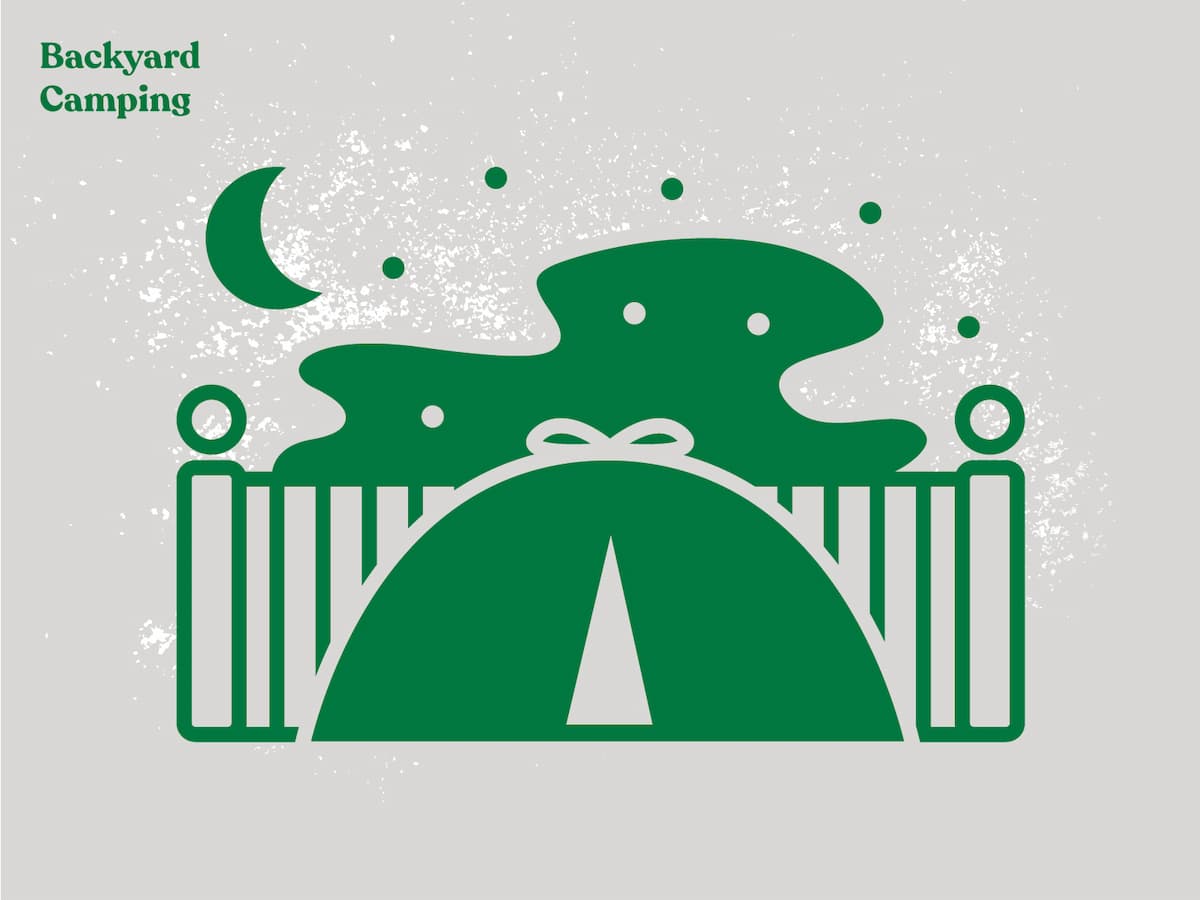

8. Backyard Camping
Set up a tent in the backyard and spend the night there for a great way to transform your space (even a small one) into a new and exciting adventure. Spend the evening cooking dinner together (something you’d do when camping), telling stories, and staying off screens. If it’s too chilly to camp outside, set up a tent in your living room. Don’t have a tent? Make a fort instead!
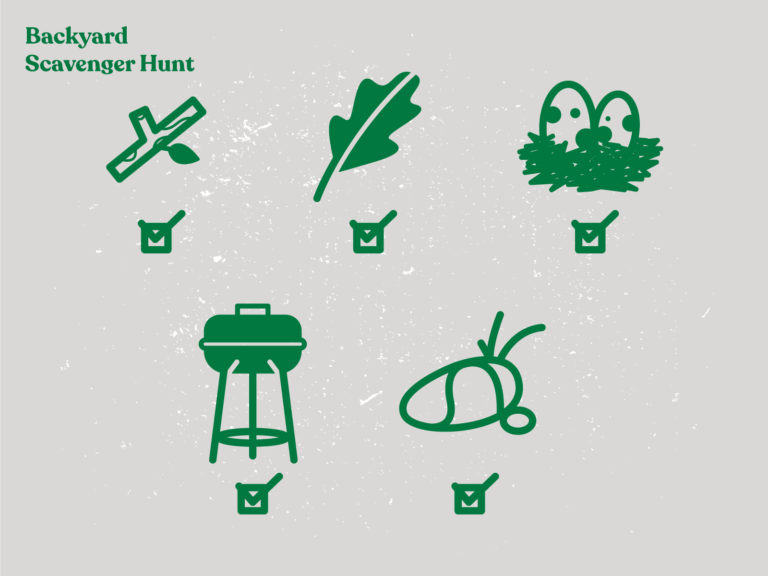

9. Backyard Scavenger Hunt
Scavenger hunts are almost always a crowd-pleaser. Sit down with your family and list things you think you will find outdoors. Write out the items on pieces of paper and provide pens, markers, or stickers to everyone so they can mark what they’ve found. Now, go out and try to find them!
Turn it into a game of bingo! Whoever gets bingo (or finishes their scavenger hunt first) gets a prize.
Here are some suggested scavenger hunt items:
- something red
- something bigger than your hand
- something that is not made by nature
- something that makes a sound
- two rocks that look alike
- a flying insect
- tall grass
- a mushroom
- animal footprints
Or, download and print the scavenger hunts we use: 1, 2, 3.
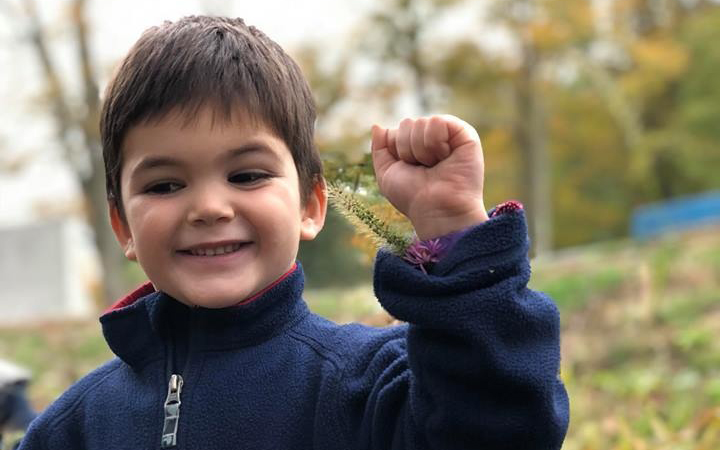

10. Nature Bracelets
Take a piece of tape—masking or painters’ tape work best—and put it around your child’s wrist, sticky side out. Tell them they’re making a nature bracelet. To do this, they’ll go outside and find pieces of nature to stick onto the bracelet: twigs, grass, pine cones, fallen petals, and the like. They can stick as many pieces of nature to your bracelet as they can find and can fit. Again, remind them about Leave No Trace and not to pick anything that’s still growing!